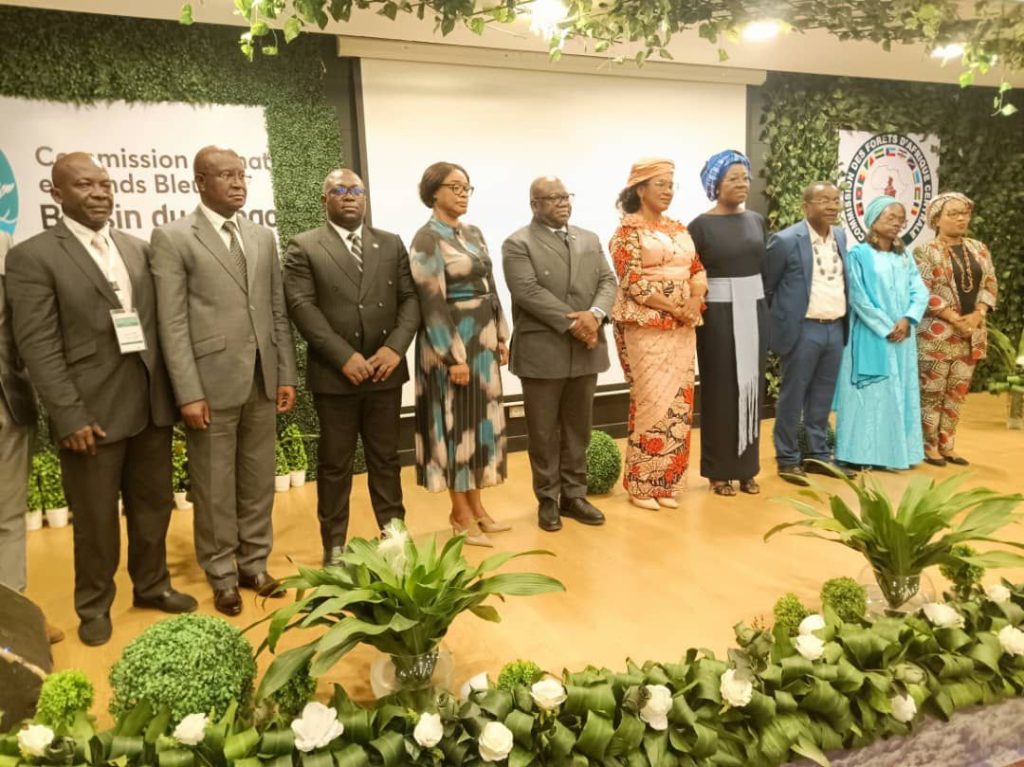From April 22 to 25, 2025, Brazzaville played host to a landmark event that could reshape the trajectory of environmental action in Central Africa. The Forum Multi-Actors on the Development of Environmental Communication and Information in the Congo Basin (FOMADECIE-BC). This first-of-its-kind gathering brought together over 250 participants, including 150 journalists from more than 50 African media outlets, as well as representatives from governments, NGOs, academic institutions, and international partners.
Organized by Afrique Environnement Plus, in collaboration with COMIFAC (Central African Forest Commission), ECCAS (Economic Community of Central African States), and the Congo Basin Forest Partnership (CBFP), the forum’s central theme — “Communication as a Strategic Tool for Achieving Conservation Objectives and Combating Climate Change” — resonated throughout every discussion, workshop, and field visit.
The forum was inaugurated with a series of impactful speeches that laid the groundwork for the days ahead. Keynote speakers spoke with clarity and urgency about the role of media and strategic communication in protecting the world’s second-largest tropical rainforest.
Minister Arlette Soudan-Nonault, Congo’s Minister of Environment and Sustainable Development, made a landmark announcement during her address:
“Environmental communication and information are a requirement of the Paris Agreement on Climate and present multidimensional challenges for states and other stakeholders. That is why I am pleased to inform you of a major initiative — the creation of the Congo Basin Radio-Television in Brazzaville. Its official launch is scheduled very soon, and I invite you to visit it this Friday, April 25, along with my team, as well as the headquarters of the Congo Basin Climate Commission.”
“This innovative tool of the Congo Basin Climate Commission is designed to provide the countries of the Congo Basin — and beyond — with a specialized environmental information outlet that will be broadcast via satellite, notably through Canal+. Abbreviated RTBC, this media hub will serve as a central platform for journalists, communicators, technical and financial partners, experts, civil society members, NGOs, young people, and more. It will grant them access to reliable and up-to-date data on environmental issues and make this knowledge available to the public in the clearest and most accessible way possible.” Minister Arlette Soudan-Nonault added

This visionary initiative not only underscores the importance of environmental communication but also demonstrates Congo’s leadership in innovating new tools for climate awareness and regional cooperation.
Chouaïbou Nchoutpouen, Deputy Executive Secretary of COMIFAC, stated:
“Communication is the fourth power. Yet in the environmental sector, we’ve barely tapped into its potential. If we wish to protect the Congo Basin and raise global awareness about its value, we must communicate better — and louder.”
He called for improved messaging that not only informs but inspires action around biodiversity conservation and sustainable development.
Richard Aba’a Aty, Senior Expert at CIFOR-ICRAF, brought attention to the stark inequalities in climate finance distribution:
“The Congo Basin is falling behind. Only 16% of climate financing has been captured in our sub-region. We must amplify our voices if we want equitable access to global environmental funding.”
His speech emphasized how communication could influence climate policy and donor priorities.
Raoul Siemeni, Founder of Afrique Environnement Plus and visionary behind FOMADECIE-BC, described the forum as a dream turned into reality:
“This forum is an ambitious dream for this great forest massif. We believe in this dream, and we believe in our region. It’s time the world hears our voice — through journalists, communicators, and all who champion environmental justice.”
Building Capacity Through Dialogue and Practice
Over four dynamic days, participants engaged in high-level panels, capacity-building workshops, and practical field visits. Topics ranged from biodiversity storytelling and environmental journalism to the role of community media in climate adaptation.
Interactive sessions focused on empowering communicators with tools and techniques to improve the impact of environmental messages. Field visits to local projects offered concrete examples of how well-crafted narratives can mobilize communities and shape environmental behaviors.
One workshop participant remarked:
“Learning how to tell the right story — at the right time, to the right audience — might be the most important conservation tool we have.”
FOMADECIE-BC 2025 proved that when communicators, policymakers, scientists, and community leaders come together, real progress is possible. As the Congo Basin faces increasing pressure from deforestation and climate change, this forum set a bold precedent: the power to protect begins with the power to communicate.
Mukazayire Youyou